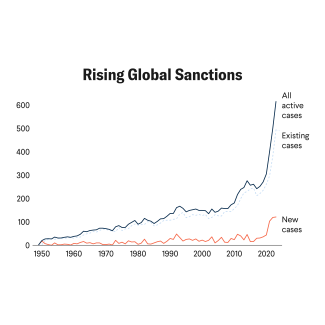Snakebites cause approximately 58,000 deaths per year in India, a disproportionately large number given the worldwide total of 81,000 to 137,000 annually. Despite this high health burden, India faces significant challenges in making antivenom—the only lifesaving treatment available for snakebite—accessible to the vulnerable populations (such as tribal communities and rural farmers) that need it the most. From production to distribution and administration, barriers prevent access at each step.
The wide variety of India's snakes further complicate these obstacles given the more than 300 native species differ by region. The sole antivenom license supports the production of polyvalent snake antivenom that only protects against the "big four" snakes—spectacled cobra, common krait, Russell's viper, and saw-scaled viper.
"This is not ideal because to make antivenom we harvest venom from only four snakes, which we assume will cause most bites. However, across India different snakes are responsible for venomous snakebites," said Gnaneswar Ch, a project lead working on snake conservation and snakebite mitigation for Madras Crocodile Bank Trust.
Monocled cobras and several species of kraits other than the common krait are the main snakes responsible for harmful bites in northeast India. In Himachal Pradesh, the green pit viper dominates. In southern states, the Malabar pit viper and hump-nosed pit viper bites are common. The health conditions caused by the bites of these species do not respond to the current polyvalent antivenom.
Each year almost 400,000 people worldwide develop permanent disabilities after snakebite envenoming
The scarcity of treatment options can change the course of a life. In June 2018, a snake bit a 30-year-old woman from the rural southern state of Andhra Pradesh. After being turned away from multiple health centers that did not stock antivenom, the woman traveled 100 kilometers (62 miles) to the emergency department at Christian Medical College, Vellore, recalled Ravikar Ralph, a physician at the poison control center. By the time she arrived, the venom had caused fatal bleeding in her brain. "I've seen many patients with similar stories," Ralph said.
Each year, 400,000 people worldwide develop permanent disabilities after snakebite envenoming, from either the venom harming the bitten limb or the central nervous system. Recognizing the scale of the mortal and disability burden in 2017, the World Health Organization declared snakebite a neglected tropical disease and convened efforts to tackle the problem in affected areas, including India.
Obstacles to Access
To make antivenom, producers harvest venom from snakes to produce antibodies that support a human's immune system so they can mount a response against the chemical and physiological fallout from the bite.
"The challenge with snake venom is its immense variability—not only between species but even among individual snakes and within the lifetime of an individual snake," said Kartik Sunagar, a venom scientist at the Centre for Ecological Sciences, Indian Institute of Science, Bengaluru. "Each venom contains a complex mix of proteins, capable of causing harm differently. . . . Even the venom produced by the same snake differs in various geographical regions and seasons."
This difficulty is illustrated in a large-scale study conducted by AIIMS Jodhpur, a tertiary care center in the northwestern state of Rajasthan. The 2025 study shows that even though the polyvalent antivenom contained antibodies against saw-scaled vipers, one of the big four, of the 105 patients studied, two-thirds did not respond well to it. That’s likely because the venom produced by saw-scaled vipers in Rajasthan differs from that produced by those in Tamil Nadu, which is the one used to make the polyvalent antivenom.
Along with the challenge of addressing all medically relevant snakes in India, harvesting quality venom is not standardized and is performed at a single facility. Moreover, the venom harvested must immediately be stored at -20°C (-4°F), and such cold storage is not widely available in India.
Because the manufacturing of antivenom relies on a 100-year-old technology that uses horses to generate antibodies, the effectiveness of the manufactured product varies greatly from batch to batch, says Sunagar.
His team has documented the low effectiveness of commercially manufactured antivenoms against pan-Indian populations of snakes, both the big four and other medically relevant snakes.
He said advances need to be made in the manufacturing process to ensure the quality of antivenom. Other experts called for greater uniformity in quality by establishing robust regulatory oversight over antivenom manufacturing.
Gnaneswar said that the Drug Controller General of India, a regulatory body, assesses antivenom quality at a single center in Kasauli, a city in northern India. For these quality checks, manufacturers send a batch of their antivenoms.
"This itself induces bias [because] they might send a higher quality of antivenom for checking [than] what they send to hospitals and health centers," Gnaneswar said. "What would be more efficient is if people pick up random vials of antivenom from manufacturers, preferably at health centers or hospitals and do these checks. That way a more uniform quality of antivenom could be ensured."
Harshjeet Bal, a pediatric surgeon and amateur herpetologist at Vellore's Christian Medical College, said that stocking and distribution remain difficult because of data gaps in the regions that tend to see the most bites. Such gaps impede medical logistics.
"There is a need to understand what to stock and how much. For example, an area might require more antivenom in the rainy seasons and lesser in the dry seasons. Knowing this can help decide how much each health center must stock. Conversely, it is also important to ensure that high risk areas always have a consistent supply and stock of antivenom," Bal says.
The price of antivenom impedes access to care even though India's public hospitals do not charge for the drug. Public supplies are often limited, and the resulting shortages force many patients to buy from private suppliers. One vial of polyvalent antivenom costs around 450 rupees (around $5), and patients typically need 10 to 20 vials.
"Many populations who need antivenom are from poor communities—either tribal communities or those that work on agricultural land. They will be unable to buy this lifesaving medicine from private pharmacies," said Julien Potet, the neglected tropical diseases policy advisor at Doctors Without Borders. "This inability to afford the full dose is also why many patients receive partial dosing of antivenom and thus are inadequately treated," he added.
Making antivenom free at private clinics, he said, would significantly increase access to treatment and lower the number of people who die or become permanently disabled.
Anand Zachariah, a toxicologist at Christian Medical College, added that doctors working in affected areas often do not know how to administer antivenom and manage its side effects.
"The anti-snake venom as a treatment is not without its risks. There is a significant possibility that the person to whom it is administered can develop a life-threatening allergic reaction as a side effect," said Zachariah. "This is why doctors who work in rural areas or centers that are not well equipped hesitate to administer the antivenom in its full dose."
It's important, he said, to educate doctors on how to manage allergic reactions and ensure that they have the required medications, such as antihistamines, steroids, and adrenaline. Manufacturing processes also need to focus on finding ways to prevent these allergic reactions, he added.
Ensuring Access
In March 2024, India introduced the National Action Plan for Prevention and Control of Snakebite Envenoming (NAPSE) to combat the public health crisis. As a first step, the plan suggests making snakebite a notifiable disease nationwide. Doing so would require health workers to fill out an intake form for all snakebite patients that includes information about the type of bite, the patient's symptoms, how many antivenom vials were administered, and whether the patient experienced any side effects.
Public health experts stress that thousands will continue to die unless antivenom production, distribution, and administration improve
This data, Gnaneswar said, could help the government allocate antivenom to better serve regions with greater incidence. It would also help the government identify where building a health workforce will be needed to manage snakebites and to ensure an adequate stock of medications needed to treat allergic reactions to antivenom.
Given the many challenges associated with delivering antivenom to rural areas, Gnaneswar also encourages the government to look for other solutions that do not require such a complicated manufacturing process.
"Several molecules that look promising are being studied," Sunagar said. Like any new intervention, however, it will take a few years to become viable for public use.
The U.S. company Ophirex is studying varespladib, a promising oral medication that can inhibit an enzyme called phospholipase A2, which is present in virtually all snake venoms. The clinical trial conducted in India included patients bitten by a wide range of snake species, including Russell's vipers, copperheads, and rattlesnakes. Results of a phase 2 clinical trial by the company, published last year in BMJ Global Health, showed promise when the drug was given within five hours of the snakebite.
"How this data translates into practice and how feasible it will be for use in a developing country such as India, however, remains to be seen," Zachariah said.
Other researchers are examining the antivenom capacity of unithiol, a compound used to treat heavy metal poisoning, and the common blood thinner heparin.
Although India's NAPSE initiative is a step forward, public health experts stress that thousands will continue to die unless antivenom production, distribution, and administration improve. As India waits for new treatments to be developed, national priorities should focus on solving manufacturing issues, strengthening supply chains, and making antivenom free and widely available.


